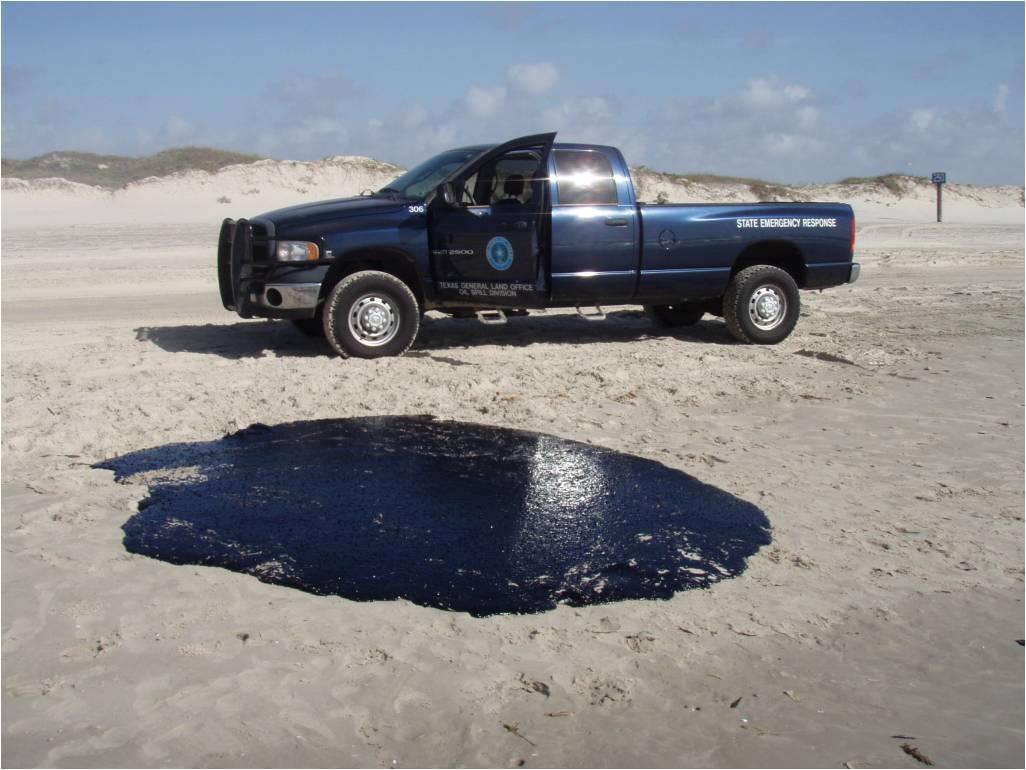
Why are mysterious balls of tar washing up on Texas beaches?
Tarballs wash up on Gulf Coast beaches every summer. But where do these gooey glops of gunk come from, anyway?
That’s the mystery Steve Buschang works to solve every time one appears on the Texas coast. Buschang is the director of research and development at the Texas General Land Office’s Oil Spill Prevention and Response Division. He’s working to develop a tarball database to help match tarballs on Texas beaches to known sources of pollution.
“Tarballs can range from a pesky nuisance to an economic nightmare for a tourist town,” Buschang said. “The science behind this project may give us a better understanding of where these are coming from and possibly how to better manage these events.”

Each time a tarball washes up on the Texas shore, General Land Office Oil Spill Prevention and Response Division personnel go out and take a sample. These samples are sent to a U.S. Coast Guard lab in Connecticut for a gas chromatography–mass spectrometry analysis. This is like taking the tarball’s fingerprints.
When a tarball is matched to a known source of pollution — such as BP’s Deepwater Horizon spill in 2010 — the Land Office’s oil spill program will use the evidence to assess penalties.
Back in the 1970s and 1980s, tarballs frequently covered the coast as offshore production in the Gulf of Mexico boomed. But in 1991, Texas lawmakers created the Oil Spill Prevention and Response Program at the General Land Office.
Since then, Texans just don’t see as many tarballs on the beach, as both industry and private boaters take steps to avoid penalties and fines for spilling oil in Texas waters. Still, tarballs wash up every summer.
So where do they come from?
While the General Land Office’s tarball database is relatively new (with one summer season of data), what it could eventually reveal might just surprise you.
There’s a good chance these tarballs come from the same sources many tarballs on the Texas coast come from, Buschang said: natural seeps of oil and gas from the gulf’s seabed. In fact, the federal government estimates that the equivalent of as much as 1,875 barrels a day leaks up all by itself. That’s about 28.7 million gallons a year.
Research from Texas A&M’s Department of Oceanography reveals that many of these natural oil seeps occur in northern Mexican oil fields about 300 miles south of Brownsville, where more than 6,000 seeps were found in the Cerro Azul.

Oil from such natural seeps drifts up and weathers at sea, before washing up on the coast as a tarball. But these all-natural, all-organic tarballs, are not the result of some industrial spill or careless boater.
In fact, Karankawas living on the Texas coast before Spanish settlement used such tarballs to waterproof baskets and pottery. And Spanish explorers used them to patch up their ships, hundreds of years before black gold was struck at Spindletop.
Sometimes, tarballs on Texas beaches are as natural as seagulls and sand dollars.
For most people, occasional brief contact with the stuff is harmless. But if you do get some on your feet, wash with soap and water, baby oil or a widely used, safe cleaning compound such as the cleaning paste sold at auto parts stores. Don’t use gas! Avoid using solvents, kerosene, diesel fuel or similar products on the skin. These products, when applied to skin, present a greater health hazard than the smeared tarball.
If you happen to see a tarball on the beach, call the Texas General Land Office oil spill reporting hotline at 1–800–832–8224.
